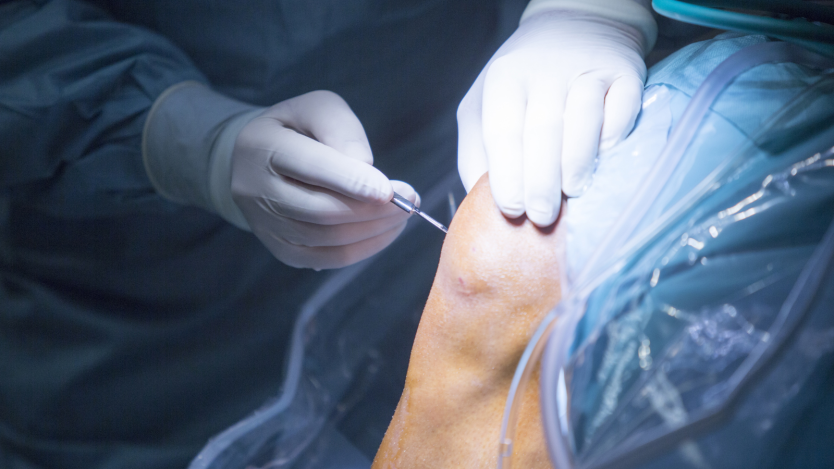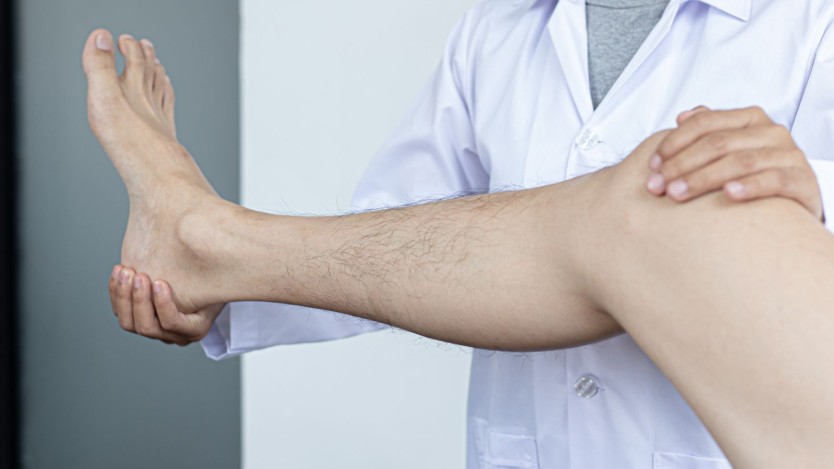Types of knee arthroscopy

What is a knee arthroscopy?
- Knee arthroscopy is a minimally invasive technique that allows us to visualise the knee from the inside and perform interventions.
- Knee arthroscopy has 2 variants: diagnostic and therapeutic.
- Knee arthroscopy is a quick procedure with an average time of 70 minutes and early rehabilitation.
Knee arthroscopy is a minimally invasive technique that consists of the introduction of a small tube equipped with a light system of minimal size (no more than 4mm in diameter) that allows us to visualise the knee from the inside and perform repairs or surgical interventions in a minimally invasive way.

The indications for a patient and his doctor to decide to undergo knee arthroscopy are two: to diagnose some type of injury, if any, that has not been possible to reach with other diagnostic tests (in this case it would be a diagnostic knee arthroscopy) or to perform surgical interventions inside the knee (therapeutic knee arthroscopy).

Do you need meniscus surgery?
Request a free and immediate appointment with our specialists in Traumatology
The general method for any knee arthroscopy is to make between 1 and 4 small incisions of no more than 4 mm in diameter at various points on the affected knee through which the surgeon will be able to access the inside of the knee with the arthroscope.
In order to be able to work comfortably inside the knee, the arthroscope that is mounted with the light system also incorporates a small tube with a saline outlet with which it is possible to fill the knee with fluid, making the inside of the joint a little larger.
The fluid that is infused will flow out of the same hole creating a stream of saline that will also allow particles to be flushed out from inside the knee.
Diagnostic knee arthroscopy
In diagnostic knee arthroscopy, the aim is to locate or identify a lesion inside the joint if there is one. If during the procedure it is necessary to intervene to repair any type of injury, it is perfectly possible to adapt or add an extra incision with which to introduce the tools necessary to do so.

Therapeutic knee arthroscopy
In therapeutic knee arthroscopy the aim is to repair or correct traumatic or non-traumatic injuries. Generally, the main injuries that can be found in this joint are meniscal or ligament injuries. In therapeutic knee arthroscopy it is possible to suture structures, dissect organic material, repair, replace injured structures with ligament replacements or clean out foreign material that may be found inside the knee.
Knee arthroscopy is usually performed under regional or locoregional anaesthesia. At no time during the operation does the patient experience pain episodes.
The aim of local or locoregional anaesthesia is to minimise the length of the hospital stay and the complications associated with it and to bring forward the rehabilitation process as soon as possible in order to achieve full functionality of the knee in the shortest possible time.
General anaesthesia is rarely necessary.
In both types of knee arthroscopy, the procedure is quick, with an average duration of around 70 minutes, being shorter in the diagnostic procedure and moderately longer in the therapeutic one.
Generally, the patient recovers quickly after twenty-four hours of immobilisation, being able to perform strengthening exercises without weight bearing on the floor from the first moment with a progressive but rapid reintroduction to normal life.

Free Assessment for Contracting Medical Services
Operarme’s Patient Service will contact you and solve all your questions on the medical service you need.
Medical disclaimer: All the published content in Operarme is intended to disseminate reliable medical information to the general public, and is reviewed by healthcare professionals. In any case should this information be used to perform a diagnosis, indicate a treatment, or replace the medical assessment of a professional in a face to face consultation. Find more information in the links below:
